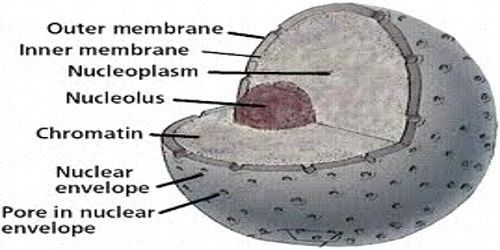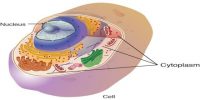Nuclear membrane: The double layered transparent membrane, which makes the outer covering of the nucleus is the nuclear membrane The outer membrane porous but the inner one is not. Chemically the membrane is made of protein and lipid. This bilayer membrane is made of lipids, and encases the genetic material in eukaryotic cells.
Function: The main function of this membrane is to keep the nucleoplasm, chromosome and the nucleus distinct from cytoplasm. Transportation and communication between internal materials and cytoplasm is also done through this membrane. The function of the nuclear membrane is to separate the nucleus of a cell from the cytoplasm that surrounds it. The nuclear membrane is made up of a double lipid bilayer. There are two parts to these two layers: the inner and the outer nuclear membrane. There is a space between the membranes, which is called the perinuclear space.

Structure: The nuclear envelope is made up of a double membrane structure that provides a barrier between the nuclear contents and the cytosol: the inner nuclear membrane and outer nuclear membrane. The inner nuclear membrane contains integral and peripheral membrane proteins that anchor the nuclear envelope to the lamina, which is a sturdy protein meshwork that gives the nucleus its structure and shape.














